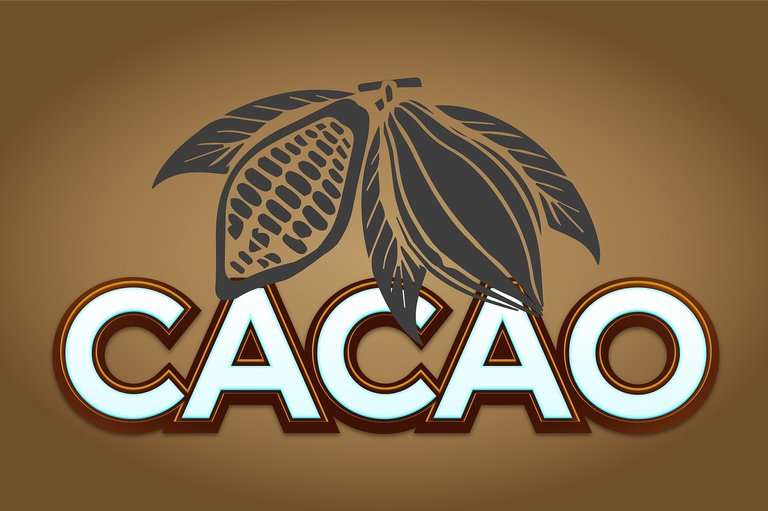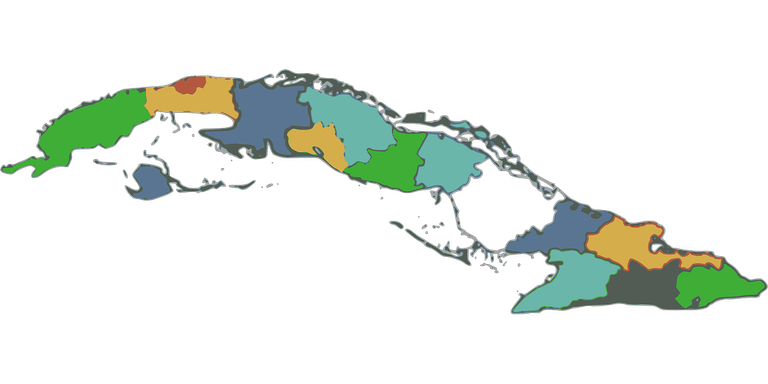Cocoa is a tropical fruit that comes from the cocoa tree, whose scientific name is Theobroma cacao L, which means 'food of the gods' in Greek. The Theobroma genus is naturally distributed from the southern region of Mexico to the Amazon basin, where its center of origin and diversity is considered. The cultivation of cocoa is believed to have begun in Mexico and other areas in Central America, and some researchers claim that the Spanish also found it growing naturally in many forests along the Amazon and Orinoco rivers and their tributaries, where valuable varieties of the plant still exist today.
This tree requires specific agroecological conditions for its development, including humidity, temperature, precipitation, and soil nutrient content, among others.
Cocoa is cultivated up to 1200 meters above sea level, and the recommended soils for planting should be flat or slightly inclined, as these types of soils are fertile and have minimal erosion. The soils should be fertile, alluvial, and deep, with a considerable number of natives, pH levels between 6 and 7, and a depth of 0.8 to 1.5 meters. They should be well-structured, with porosity ranging from 10% to 66%, good moisture retention, and more than 3% organic matter content with a carbon-to-nitrogen ratio of at least 9. The cation exchange capacity (CEC) must be greater than 12 meq/100g of soil on the surface and greater than 5 meq/100g of soil in the subsurface. The content of boron and calcium should be above 0.2 ppm, with magnesium CEC greater than 2 meq/100g of soil and potassium CEC greater than 0.24 meq/100g of soil.
Cocoa requires a significant amount of water for cultivation, between 1800 and 2500 millimeters of rainfall evenly distributed throughout the year, and the suitable temperature for its development should range between 24°C and 26°C, with a relative humidity of 70% to 80%.
Now, let's learn about cocoa cultivation in Cuba. In Cuba, cocoa is primarily cultivated in the eastern region, covering the Nipe-Sagua-Baracoa and Sierra Maestra mountain ranges. Within these, the largest production area is located in the Guantánamo province, accounting for 76% of the national area and 91% of production, spread across six municipalities. However, cocoa is grown on land that does not meet the agroecological requirements for cultivation, and a lack of access to new technologies in many producing areas has contributed to low yields in Cuba, which do not exceed 0.28 tons per hectare.
This crisis in Cuban soils, except for those in Guantanamo, which fail to meet the nutritional requirements for the proper development of cocoa, arises from the overexploitation of our lands. They are no longer as fertile as they once were because we have not been applying nutritional amendments each year, and we lack the appropriate technologies to create the conditions for successful cocoa cultivation.
Due to all these factors, one of our major national crops is approaching its end. I hope we can address these issues to enjoy natural Cuban chocolate. I hope you enjoyed the article and learned more about cocoa and its cultivation in Cuba. Thank you, Hivers.
Español:
El cacao es una fruta de origen tropical que proviene del árbol cacao, cuyo nombre científico es Theobroma cacao L, que significa en griego alimento de los dioses. El género Theobroma se distribuye naturalmente desde la región meridional de México, hasta la cuenca del Amazonas, donde se considera su centro de origen y diversidad . El comienzo del cultivo del cacao se sitúa en México y en otras zonas de América Central y algunos investigadores aseguran que los españoles también lo encontraron creciendo de forma natural en muchos bosques a lo largo de los ríos Amazonas y Orinoco y sus afluentes, donde aún hoy existen variedades de la planta de gran valor .
Este árbol requiere para su desarrollo de determinadas condiciones agroecológicas, como son la humedad, temperatura, precipitaciones, contenido de nutrientes en el suelo, entre otros.
El cacao se cultiva hasta los 1200 metros sobre el nivel del mar y los suelos aconsejados para la siembra tienen que ser planos o apenas inclinados, ya que en la moda ese tipo de suelos son fértiles y la erosión es mínima. Los suelos requeridos deben ser de fertilidad deseable, aluviales y profundos, con un número considerable de naturales, con un pH entre 6 y 7. Los suelos deben poseer una profundidad de entre 0,8 y 1,5 m, bien estructurados, con porosidad de 10 % a 66 % y buena retención de humedad. El contenido de materia orgánica tiene que ser mayor de 3 % con una relación carbono/nitrógeno de 9 mínimos. La capacidad de intercambio catiónico (CIC) debe ser mayor de 12 meq/100g de suelo en la superficie y mayor de 5 meq/100g de suelo en el subsuelo. El contenido de boro y calcio debe ser superior a 0,2 ppm, con una CIC de Magnesio mayor que 2 meq/100g de suelo, y una CIC de Potasio mayor que 0,24 meq/100g de suelo .
El cacao requiere para su cultivo una gran cantidad de agua, entre 1800 y 2500 milímetros de precipitaciones, bien distribuidas a lo largo de los 12 meses del año y la temperatura adecuada para el desarrollo del cultivo debe ser ligera entre 24 °C y 26 °C, con una humedad relativa de 70 % a 80 % .
Ahora vamos a conocer sobre el cultivo del cacao en Cuba.
En Cuba, el cacao se cultiva principalmente en la región oriental, que ocupan los macizos montañosos Nipe-Sagua-Baracoa y Sierra Maestra. Dentro de estos, la mayor zona productora se encuentra en la provincia Guantánamo, que representa un 76 % del área nacional y un 91 % de la producción, distribuidas en seis municipios. Sin embargo, la ubicación del cacao en superficies que no reúnen los requerimientos agroecológicos para el cultivo y la crisis con la obtenc de nuevas tecnologías en muchas zonas productoras, son factores que han influido en los bajos rendimientos en Cuba, que no sobrepasan los 0,28 toneladas/hectáreas.
Está es una crisis que poseen los suelos de Cuba, casi ninguna exceptuando los de Guantanamo, cumplen con los requerimientos nutricionales para un buen desarrollo de este cultivo, y es que ya no tenemos suelos virgenes, los hemos explotado mucho y no se le aplican cada año los enmendantes nutricionales que llevan y además no poseemos las tecnologías adecuadas para crear las condiciones para un buen cultivo de cacao.
Por todo esto uno de nuestros principales cultivos nacionales está llegando a su fin.
Espero que podamos resolver estos problemas para disfrutar del chocolate natural de Cuba.
Espero que les haya gustado el escrito y que hayan aprendido un poco más sobre el cacao y sobre el cultivo del mismo en Cuba.
Gracias hivers saludos



Congratulations @alejandro1799! You have completed the following achievement on the Hive blockchain And have been rewarded with New badge(s)
Your next target is to reach 100 replies.
You can view your badges on your board and compare yourself to others in the Ranking
If you no longer want to receive notifications, reply to this comment with the word
STOPSource of potential text plagiarism 1
Source of potential text plagiarism 2
Source of potential text plagiarism 3
Source of potential text plagiarism 4
Plagiarism is the copying & pasting of others' work without giving credit to the original author or artist. Plagiarized posts are considered fraud. Fraud is discouraged by the community and may result in the account being Blacklisted.
Guide: Why and How People Abuse and Plagiarise
If you believe this comment is in error, please contact us in #appeals in Discord.